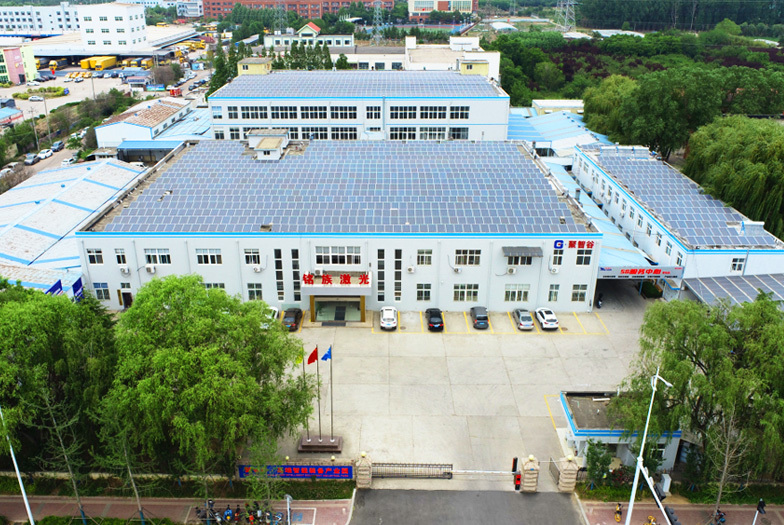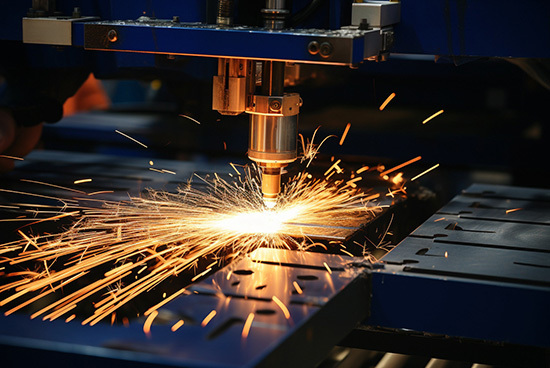Handheld laser welding machine—The preferred tool for professional welders
Release time:
2025-11-24
In the field of industrial manufacturing, welding technology is the core process for joining metal materials. Traditional welding equipment, however, has gradually fallen short of meeting the dual demands of precision and efficiency in modern manufacturing—largely due to its complex operation, significant thermal impact, and low efficiency. Fortunately, the emergence of handheld laser welders, with their portability, high precision, and exceptional performance, has quickly made them indispensable "powerful assistants" for professional welders, demonstrating irreplaceable advantages in high-end industries such as automotive manufacturing, aerospace, and precision electronics.
Disrupting the Tradition: Redefining Welding Processes
The core breakthrough of the handheld laser welding machine lies in its "non-contact" welding mode. By using a high-energy-density laser beam as the heat source, the equipment can precisely focus on the welding area, delivering energy with an efficiency several times higher than traditional arc welding. Take automotive manufacturing as an example: when welding thin-sheet components like car doors and chassis, laser welding enables melt-depth control down to 0.1mm, with a heat-affected zone of just 0.5mm—far smaller than the 3–5mm typically seen in conventional welding processes. This "cold-processing" characteristic significantly reduces workpiece deformation, eliminating the labor-intensive post-welding grinding required in traditional methods, and directly boosting production efficiency by more than 30%.
More notably, it boasts exceptional operational flexibility. Traditional welding equipment is limited by its fixed optical-path design, making it challenging to meet the welding needs of large workpieces or components with intricate structures. In contrast, the handheld laser welding machine comes equipped with a 5-10-meter-long original fiber optic cable, enabling 360-degree, dead-angle-free welding. For instance, in shipbuilding, when repairing localized damage to a vessel’s hull, welders don’t need to disassemble any equipment—instead, they can simply hold the welding gun and perform on-site repairs directly. As a result, daily repair efficiency improves by as much as 50% compared to conventional methods. This "on-demand mobility" feature completely shatters spatial constraints, allowing welding operations to extend beyond workshops and into complex outdoor and high-altitude environments.
Efficiency Revolution: From "Time-Consuming and Labor-Intensive" to "Precise and Highly Effective"
The efficiency advantages of handheld laser welding machines are evident across multiple dimensions. First, their welding speed is more than twice that of traditional argon arc welding. For instance, when welding a stainless steel sink, a seam that traditionally takes 10 minutes to complete can now be finished in just 3 minutes using laser welding—plus, the weld achieves a mirror-like smoothness, eliminating the need for subsequent polishing. Second, the equipment significantly reduces energy consumption, saving 80% to 90% of electricity compared to arc welding, which translates to a roughly 30% decrease in overall processing costs. According to statistics from a leading home appliance company, after adopting handheld laser welding machines, a single production line has seen annual electricity cost savings exceeding 200,000 yuan, while also reducing the need for two dedicated grinding workers.
In the field of precision manufacturing, this efficiency boost is even more pronounced. In the welding of electronic components, laser welding can achieve a focused spot diameter as small as 0.2mm or less, enabling precise connections of tiny parts like micro-sensors and circuit boards while eliminating the risk of thermal damage associated with conventional welding methods. Meanwhile, the medical device industry leverages the "no consumables" feature of laser welding, achieving zero wire consumption when joining titanium alloy artificial joints and stainless steel surgical instruments—resulting in a 15% reduction in per-unit production costs.
Safety First: From "High-Risk Operations" to "Intelligent Protection"
Safety risks in welding operations have always been a persistent pain point in the industry. Traditional arc welding generates intense light, high temperatures, and flying sparks, which can easily cause eye burns, skin scalds, and even ignite fires among operators. Handheld laser welding machines, however, incorporate multiple safety features to establish a robust protective system:
1. Intelligent Sensing System: The welding torch is equipped with a temperature-sensing trigger switch that activates the laser only when it comes into contact with the metal workpiece, and automatically locks the laser beam within 0.5 seconds after the workpiece is removed, eliminating the risk of accidental operation.
2. Optical Protection: The laser beam path features a fully enclosed metal shielding design, paired with anti-radiation goggles, effectively blocking 99.9% of laser reflections to ensure the eye safety of operators.
3. Environmental Monitoring: The equipment features a built-in smoke purification system that instantly captures metal vapors generated during welding, working in tandem with a forced ventilation unit to ensure indoor air quality remains within safe and compliant levels.
A real-life case from an auto repair shop underscores its safety: When repairing the aluminum alloy wheels of a crashed vehicle, traditional argon arc welding caused deformation due to the high heat, necessitating rework. However, after switching to a handheld laser welding machine, not only did the weld quality meet standards, but the process was also completely free of spatter and unpleasant odors. As a result, operators no longer needed to wear bulky protective gear, significantly improving their comfort during the job.














